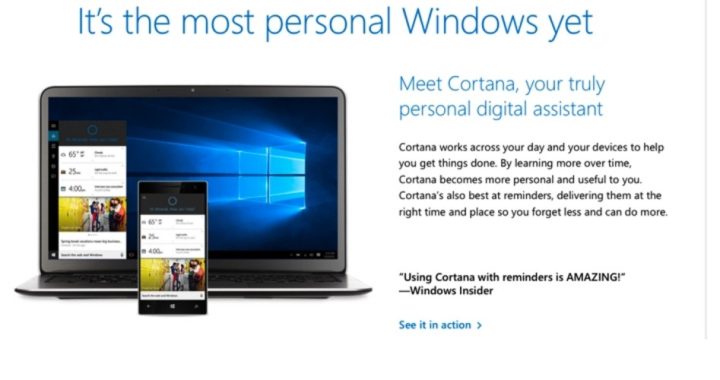
If you are currently a Microsoft user running either Windows 7 or 8, you are eligible for a free upgrade to the “new and improved” Windows 10. But before you upgrade, be aware that it’s free as in price, not as in liberty. Many of the new features and settings of Windows 10 have been deemed spyware by computer security experts. It’s one thing to have programs and applications spying on you. It’s another thing altogether to have your operating system designed to do it.
When Microsoft announced the “free” upgrade, many were left wondering why the Redmond giant would give away licenses to use the new operating system. Now it appears that the reason is simple: greater data-mining opportunities. Windows operating systems have long included security weaknesses that leave users vulnerable to spying and data-mining from others. What is different with the newest iteration of Windows is that Microsoft is directly involved in that spying and data-mining and has built the entire operating system in such a way as to allow it.
To install the Windows 10 upgrade, users must agree to the Microsoft Services Agreement and its accompanying documents. Few will ever read the terms of these documents since they span some 40,000 words and would run 110 pages if printed. As is to be expected, most of the terms are written in legalese and are not overly easy to understand. There are some parts of the terms that users need to be aware of, though, because agreeing to them grants Microsoft the right to read, save, and share anything stored on or accessed using any computer running Microsoft Windows as well as any computer using Microsoft products or services.
The Microsoft Privacy Policy, which begins by saying, “Your privacy is important to us,” goes on to address the types of data collected by using Windows or other Microsoft products or services. That data includes the user’s name, e-mail address, postal address, phone number, passwords, password hints, age, and gender, as well as other personal information, including:
Interests and favorites. We collect data about your interests and favorites, such as the teams you follow in a sports app, the stocks you track in a finance app, or the favorite cities you add to a weather app. In addition to those you explicitly provide, your interests and favorites may also be inferred or derived from other data we collect.
That is a lot of information about users. But it doesn’t end there. Microsoft also collects data on people who may not even use Microsoft products or services:
Contacts and relationships. We collect data about your contacts and relationships if you use a Microsoft service to manage contacts, or to communicate or interact with other people or organizations.
But what about the data actually stored on the PC? That is covered in the Privacy Agreement as well. Here’s a hint; When Microsoft says, “Your privacy is important to us,” it means the company wants to take your privacy from you and use your personal information for its own purposes. The agreement says:
Finally, we will access, disclose and preserve personal data, including your content (such as the content of your emails, other private communications or files in private folders), when we have a good faith belief that doing so is necessary.
If you are not comforted by Microsoft’s “good faith” assurances, you are probably thinking correctly. Considering the company’s record dealing with users’ data and the depth of snooping that the Microsoft Privacy Agreement allows, “good faith” isn’t what it used to be.
Since all these policies apply to all Microsoft products and services — including Windows 7 and 8 — what makes Windows 10 different? When Windows 10 is installed, the default settings will allow all data to be collected and shared with Microsoft. Because users agree to this by simply clicking a button when they install the operating system, and because it is all turned on by default, most of the millions of Windows users will have no idea that they have given Microsoft nearly unlimited access to everything they do on their computers.
Because Windows 10 is set up to allow all this data collection by default, disabling data collection (where it is even possible to do so) will also disable most of the features that are the main selling points of the operating system. In addition, it is an arduous and time-consuming process involving going through at least 13 different screens in the privacy settings.
By way of comparison, users who install any of the various distributions of the Linux operating system do not consent to any such agreements. In fact, the closest thing in Linux to any of this is a feature in Ubuntu that allows users to search Amazon from their desktop screen. That feature is easily disabled by clicking a single button.
Maybe users of Windows 7 and 8 who are concerned about privacy and liberty should consider declining Microsoft’s offer for a free upgrade and simply “upgrade” to Linux.
[In the interest of fairness, the writer of this article has been a Linux user for several years and does not use any Microsoft products or services. This article was written on his System76 Bonobo Extreme running Ubuntu 14.04 using LibreOffice 4.2.]




